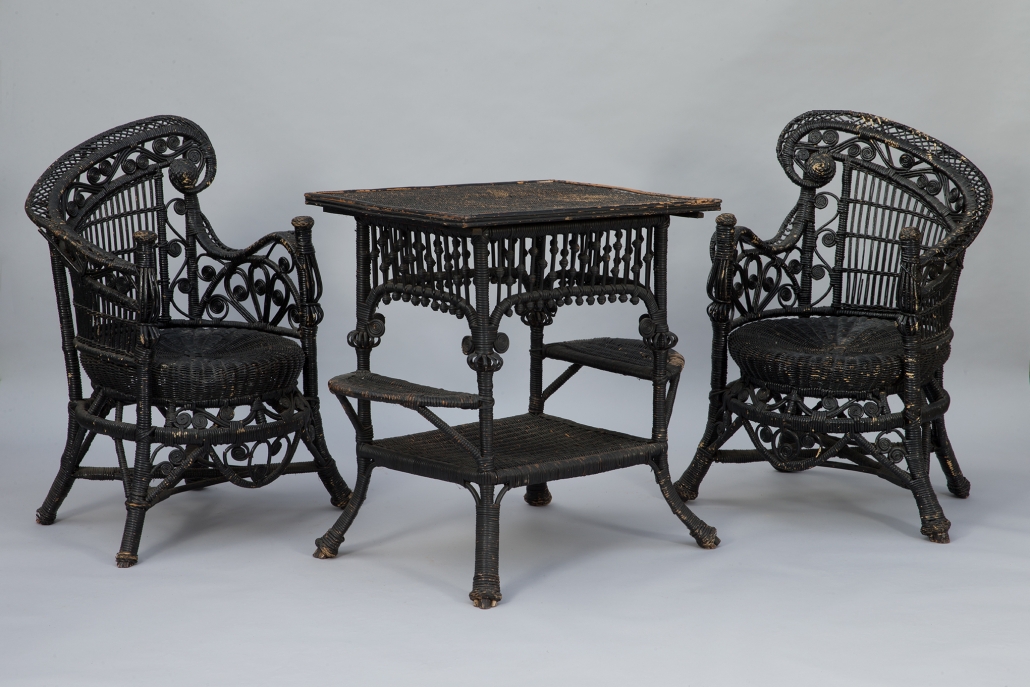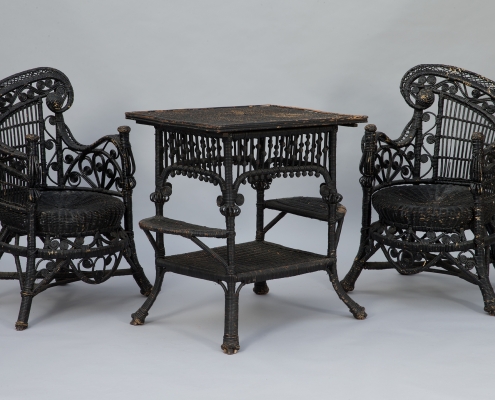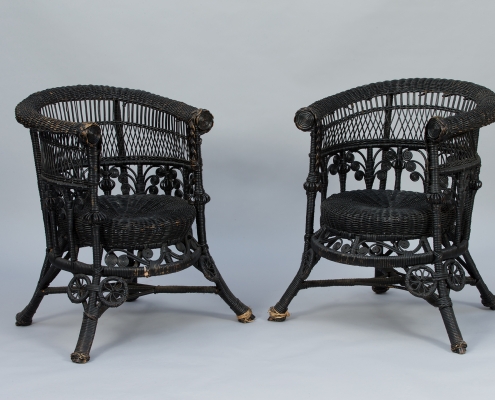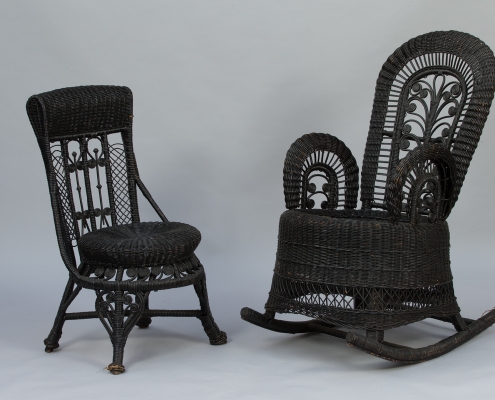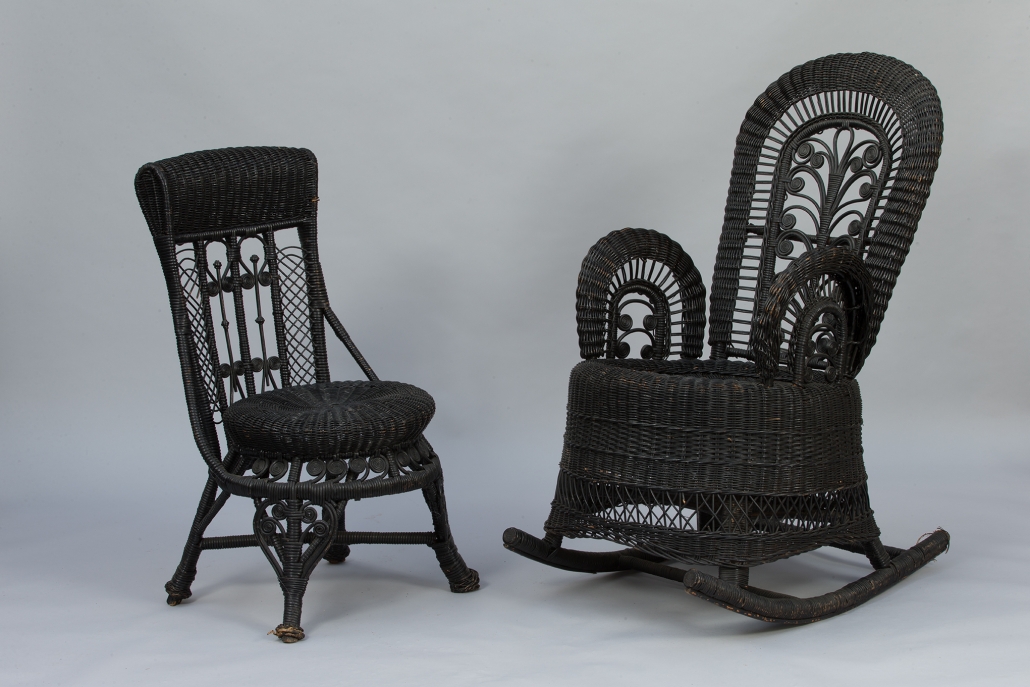Black Rattan Lounge, Heywood Brothers & Wakefield Company, circa 1900-1920
This set of seats and this table were made in the United States in the workshops of the Heywood Brothers & Wakefield Company in the early twentieth century. Their curves and refined forms testify to the exuberance achieved by the American rattan makers of this period. This living room is a living example of a fashion; fashion for a material, rattan, and for a way of life in its own right. Both indoors and outdoors, this furniture takes on its full meaning and displays all its decorative power.
Cyrus Wakefield created his first factory on the Mill River in Massachusetts in the early 1850s. His success quickly led him to increase his production and expand the factory onto neighboring lands.
By 1865 rattan was at the forefront of fashion, evolving in a garden or on a veranda. The sofa, sometimes exuberantly ornamented, was certainly the most popular seat of the post-Civil War era. Most of the time, rattan furniture remained in its natural state: if it lost its color, it was not repainted. Moreover, many manufacturers advised to leave them outside in the rain: once dry, rattan regains its natural elasticity.

